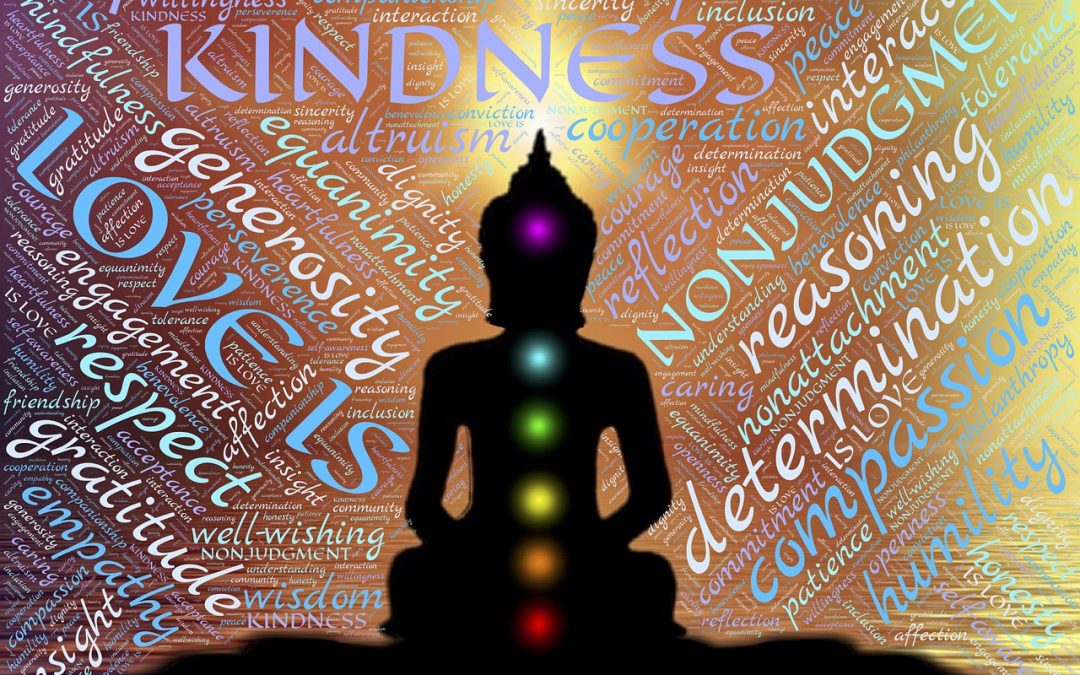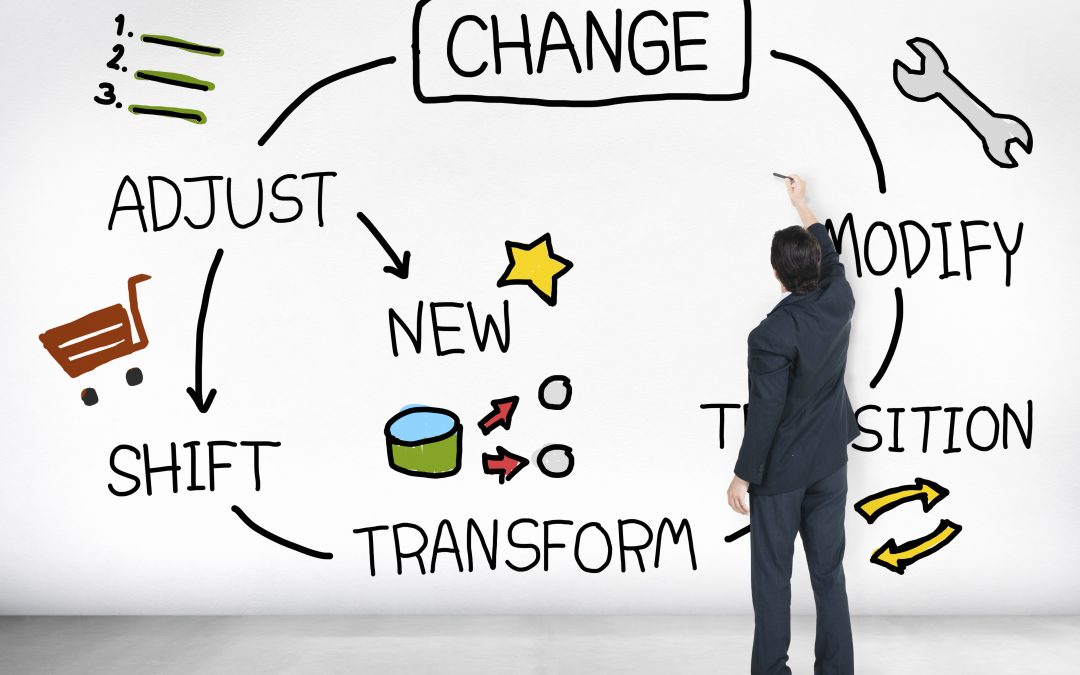
by PT-clc | Mar 14, 2018 | Benefits of being in nature, Dealing with Stress, Self-Care
I just returned from three relaxing and fun weeks vacation in Mexico. We spent two of those weeks in a magical fishing village, which made me reflect on and appreciate the power of place.
Have you ever visited a place and felt like you were “home”? Whenever I enter this pueblo, any stress I have instantly drops away. I feel relaxed, playful, open to possibility, “in the flow”. There is also a special sense of community in this town where locals and foreigners live peacefully together.
Some years ago, a woman from California started a children’s art and music festival that is still held every year in March. Over time, though her hard work and dedication, she gathered human and material resources and now the festival has grown to include a bricks and mortar community center with a library, computer room, recycling depot, coffee shop and a small retail space. It is a place that offers courses for girls and boys, women and men on everything from entrepreneurship, to environmental education, to sustainable development, The center has a truly welcoming atmosphere and is aptly called Entre Amigos (among friends). People who visit from largely Canada and the US often volunteer time to contribute to projects and help with fundraising.
A sponsorship program has been developed whereby Canadians and Americans (many of whom live there 6 months a year) sponsor promising local Mexican high school students to attend college and university.
Last year we attended a fundraiser for the local hospital where many talented local children performed music, dancing, gymnastics … . It was an animated community event. Every year there is a well-organized music festival in the local plaza (square) with amazing performers from around Mexico and a few from other countries.
What keeps my partner and I coming back to this magical place? It’s a combination of the welcoming and supportive atmosphere, the natural beauty, the strong sense of community and the positive bonds and caring evident among the locals and those who visit for periods of time. It’s also a community where I feel I can contribute and make some sort of positive difference. Plus I get to speak Spanish, and for some reason I have a natural affinity for Latin culture.
I have also experienced the power of place closer to home. When I’m feeling stressed and want to ground and unwind, there is a place by the ocean about 10 minutes from our home that I walk to. When I lay on the rocks and feel the sun on my body, any tension drops away and is absorbed by the rocks. I feel so grateful to live so close to this place of natural beauty.
Have you experienced the power of place? I’d love to hear your experiences and see descriptions of your magical places. Feel free to share those below and to forward this post to others. I also encourage you if you haven’t already, to find a place close to where you live that you can go to relax, reconnect and let your stress melt away.

by PT-clc | Feb 13, 2018 | Health & Wellbeing, Self-Care, Stress Management
I’ve come to believe that if I don’t truly love myself and treat myself with kindness, I’m unable to have a happy, fulfilling and healthy relationship with someone else.
February is celebrated as the month of love in many countries around the world. It’s often thought of in the context of romantic love. That said, this month has got me thinking about self-love and being kind to myself. I believe in the saying If you aren’t good to yourself, no one else will be.
We often give so much to others that there is little left for ourselves and we feel depleted, exhausted and at times resentful. We think that if we say “No” that others won’t like us or we’ll be letting them down. I know for sure that when you set healthy boundaries, people sense and respect them and still love you, perhaps even more.
So What does being kind to yourself look and feel like for you?
For me it looks like:
- Taking time each day to do something special for me
- Meditating each morning.
- Doing yoga 3 times a week or more
- Walking in nature once a week or more
- Booking trips and making time to visit my grandchildren every quarter
- Truly being present with family and friends when I am with them
- In yoga class, listening to my body and not pushing myself when I feel low in energy
- Taking time to breathe and “smell the roses’ instead of constantly thinking about my “to-do” list
- Listening to music I love
- Letting my inner child come out to play regularly – through dancing around my kitchen, finger painting without a picture in mind, swimming, kayaking, hiking, cycling
- When my inner critic begins to chatter in my head, saying a loud NO to it and stating “I’m not listening to you any more” and then reframing the negative chatter into a positive statement and saying it aloud
- Treating myself to a massage
- Treating myself to a pedicure
When I’m kind to myself I feel:
- Relaxed
- Playful
- Fully present
- At ease
- Free of negative chatter
- Grateful
- Creative
- In “the flow”
- Fun to be around
- Inspired
I invite you to answer this question and notice what flows out of you. I challenge you to begin every morning thinking about and choosing at least one way you wish to be kind to yourself that day. During the day notice how you feel when you are doing so, and also how others respond to you. Continue doing this each day for three weeks and notice what difference it makes in your life.
What I know to be true is that when we’re kind to ourselves magical things happen!
I’d love to hear from you and what you do to be kind to yourself, as well as what you notice when you intentionally do this. Please share your comments below and feel free to forward this post to others.

by PT-clc | Feb 6, 2018 | Change, Coping with Change, Creative Living, Entrepreneurship, Life Transitions, Women in Business
What does change have to do with being an entrepreneur?
- Entrepreneurship is all about change. When you start your own business it’s often scary as you’re leaving a “secure” position to go out on your own to new and uncharted territory. Having a business is all about experimenting. You try one niche and if you don’t get a great response you switch to another. You write copy for a program, product or service, test it, see who it attracts and then write some more and test that. In business we learn from our successes as well as our failures (usually more from our failures). Being successful in business requires being open to learning and growing.
- As we move through the various phases of growing our business, limiting beliefs and unresolved issues typically come up for us. Our inner critic sends us messages such as: Who do you think you are to want a 6-figure income? (related to self-worth); How can you choose such a narrow niche, you’ll have no clients? (related to fear of not making enough money). In order to grow your business you need to address those limiting beliefs and unresolved issues which involves change and transformation.
- Life Transitions and Changes in Business are intertwined. If we are stressed by changes in our business (e.g. breakdown of a business partnership), we often bring them into our personal lives and take our anger and frustration home with us. Similarly, if we are going through relationship transitions (e.g. separation or divorce), we often bring the emotions associated with those into our work. They may cause us to lose our focus, our patience and result in less engagement, lower productivity and more conflict at work.
- Our beliefs about change influence our behaviors related to it. For example, if you perceive change as scary and to be feared, then you will resist it and experience a lot of stress related to it. Whereas, if you view change as a creative process that opens you up to new possibilities, the change experience becomes exciting, easier and faster.
- There is some solace in knowing that we are all hard-wired to fear change. Our amygdala (part of the brain) is constantly scanning the environment to protect us and keep us safe. When it perceives a threat or something out of the ordinary, it sends messages to our bodies to go into fight, flight or freeze.
What happens when we don’t embrace change?
Research and life experiences show that if we don’t learn to embrace change we:
- keep repeating the same patterns in our lives and remaining unhappy and unfulfilled
- expend a lot of energy resisting change
- feel constantly under stress leading to chronic health issues and negative impacts on our relationships and our businesses.
The bottom line is if we don’t learn to embrace change, over time it negatively impacts both our personal and our professional lives.
So how can we reduce our fear of change?
We can reduce our fear of change when we:
- better understand how and why we respond to change
- learn a proven model and tools to help us reduce resistance and embrace and successfully navigate any change.
The more you understand change and the more self-aware you are about how and why you respond to it, the more easily you can embrace and move through it.
Why I’m so passionate about sharing this message
Having been an entrepreneur since the early 1990s, and running three successful businesses, I’ve experienced many changes in my business and personal life and learned some of my lessons the hard way, I know that having tools and processes to understand and embrace change is critical to creating the business and life of your dreams. I’m now called to support leaders and entrepreneurs to better understand and to embrace change. Based on more than 25 years of leading, consulting and coaching with individuals and organizations from diverse cultures on 5 continents, I’ve created the Art of Change Framework. It’s a proven 5-step process that guides and supports individuals and teams to move from fear and uncertainty to clarity and confidence. It makes the change experience fun as it likens the process to learning a dance.
We all need to process change and we do it in different ways and at different rates. When you have an increased understanding of change and how you respond to it, and proven processes and tools to help you to successfully navigate the change experience, it positively impacts your business and your bottom line.
If you’d like to learn more about the Art of Change Framework, here are some relevant articles: https://pamela-thompson.com/strengthen-impact-world-dance-change/ ; https://pamela-thompson.com/important-embrace-change-begin/
If you’re going through a life transition and would like to learn more about it and how to more easily navigate it, I encourage you to sign up for my complimentary Transition Journey Quiz and Tips – https://pamela-thompson.com/about/
I always like to hear from you and how the articles “land” and welcome your comments below. How has change affected you and your business? What tools and strategies have you found helpful to navigate change? Please share the post with others who you think might benefit.

by PT-clc | Jan 23, 2018 | Creative Living, Creativity, Health & Wellbeing, Self-Care, Stress Management, Women in Business
With all the gloom, doom and uncertainty in the world, it’s more important than ever for us to “let go” of our worries and to connect with our inner child. What do I mean by “connecting with your inner child”?
Imagine what it was like when you had no cares or worries, when you felt loved, safe and secure and lived each day from a place of childlike wonder. I invite you to take yourself back to that time and place. What do you see and how do you feel?
I see myself playing with friends in nature; pretending we are pirates and digging for gold in the farmer’s field close to where I grew up. I see myself swinging so high and then jumping off a swing. I see myself running, jumping and feeling so free. I see myself swimming at the family cottage, back and forth between the docks. When I imagine doing each of those activities I feel light, carefree, empowered, creative, energized and curious.
So how can you connect with your inner child and with those feelings you felt as a child? One clue is when I play with my grandchildren. I now have 4, three years of age and under! On a recent visit I went for a walk with my 21- month old granddaughter. It was her first winter of experiencing snow and what it was like to walk in the cold. Initially she had a bit of trouble walking all bundled up in her cumbersome snowsuit. Before long she was almost running, so excited to be outdoors. I drew pictures in the snow and she kept saying “more, more.” I showed her how to blow snow off her mittens as it was too dry to make a snowman. I helped her make an angel in the snow. I tried to put myself in her shoes and see through her eyes of childlike wonder. It was so fun and energizing!
Another activity that connected me with my inner child was in the acrylic painting class I recently started. In the class the instructor encouraged us to try finger painting and to free paint without trying to paint anything special. It was an incredibly liberating experience! For several days after, I felt so connected to my creative side, easily designing a workshop and doing some writing. I felt like I was “in the flow”. My mind was clear and focused.
I really enjoy being in, on or by water. When I’m feeling stressed I find it therapeutic to walk to the ocean (which is close by) and lie on the rocks. When I do this I feel grounded and supported by Mother Earth. My worries fall away and I relax and feel embraced by this sacred space.
Here are a few suggestions of how you may connect with your inner child.
- Try finger painting with no agenda and notice how it makes you feel
- Is there a special nature place close to where you live? Visit it regularly. Bask in its beauty and notice how being there makes you feel
- Spend time with young children; notice and try to reconnect with your childlike wonder
- Spend some time at least once a week imagining a time or times when you felt loved and supported with no worries or cares. Feel those feelings and recall what you were doing at that time. Perhaps begin integrating those activities into your life. It could be a regular hike, walk, drawing …
- Create a sacred space in your home; a place for you that is comfortable and contains a few special reminders of your childhood; e.g. rocks, shells … . Commit to spending time in that space initially for 10 to 15 minutes three times a week and notice how you feel when there and the cumulative effect.
I believe that if we all took the time to reconnect with our inner child and let her or him “come out to play” on a regular basis, that there would be less conflict, less stress, more creativity and more collaboration in our lives, communities and workplaces.
I’d love to hear how you connect with your inner child and what you’ve noticed from that experience. Please share your experiences below so we can all learn and grow from each other.
If you’d like to learn more about how to Tap into and Express Your Creative Side I invite you to read chapter 5 in my #1 Best Selling book “Learning to Dance with LIfe” – https://pamela-thompson.com/books/

by PT-clc | Nov 1, 2017 | Change, Coping with Change, LeadinginUncertainTimes
In a previous post I outlined a proven process for embracing change while at the same time being a force for good in the world – https://pamela-thompson.com/strengthen-impact-world-dance-change/. In this article we will take a deep dive into the first step in this 5-step process: Shine the Light.
In step one of the Art of Change Framework we explore how you respond to change and why.
Reflecting on how you’ve responded to previous changes in your life will provide you with clues as to how you will respond to integrating new beliefs and behaviors into your life, and changing old beliefs, attitudes and behaviors.
A good place to start is to answer the question How do I typically respond to change on a scale from 1 to 10; 1 being “I thrive on it” and 10 being “It scares me to death”?
Another useful exercise is to reflect on past experiences with life changes and answer the question What have I learned that supports me to adapt and move forward when faced with change?
Barriers to Change/Moving Forward
A number of barriers to change have been identified in the literature including: becoming paralyzed by fear, procrastinating, blaming others, believing we can’t do something or are not worthy, always focusing on problems rather than solutions, getting stuck in old habits or denying change is happening, and not being willing to put in the effort required to make a change. It’s helpful to think about a change that has been recently imposed on you or was in the past. How do you feel about this change? What barriers do you have to embracing it? I invite you to take a few minutes to jot down your responses to these questions.
Overcoming Resistance to Change
M.J. Ryan in her book “Adaptability – How to Survive Change You Didn’t Ask for” (2009) notes that the ability to adapt is “the key indicator of success in these turbulent times. It’s the capacity to be flexible and resourceful in the face of ever-changing conditions.”
Aikido masters say that to be successful in life three types of mastery are needed: i) mastery with self; ii) mastery with others; and iii) mastery with change; meaning “the capacity to adapt easily without losing our center – our values, talents and sense of purpose” (Ryan, 2009). How can we learn to be change masters?
How can we learn to recover quickly from change and be adaptable so that when changes are “forced upon us” (e.g. a job loss) or we choose to make a change, we view it as an opportunity rather than a challenge?
There are a number of studies and tools in the literature that provide us with a better understanding of change and how to navigate it successfully.
Maddi and Kobassa (2005) in their book Resilience at Work: How to Succeed No Matter What Life Throws You analyzed data from 400 studies on organizational change and also conducted their own study of AT & T executives during reorganization. They found that those who thrived the most while undergoing organizational change displayed 3Cs: i) Challenge; ii) Control; and iii) Commitment. Challenge – meaning they saw change as an opportunity to learn and grow and were optimistic about the future. Control – meaning they believed that they had choices and could influence their lives and events around them. Rather than worrying about things they could not control, they focused on identifying what they could control and took action on those things. Commitment – meaning they lived their lives passionately and stayed connected to people even when times got tough.
Tips for Overcoming Resistance to Change and Moving Forward
- Change your perspective – View change as an opportunity for self-growth and learning; an opportunity to explore new solutions and ways of doing things; to put on a new “pair of glasses” and see the world differently.
- Slow down and go inside yourself – create some time and space for yourself rather than keeping yourself busy. Set aside time in your schedule for you. Spend at least 30 minutes a day meditating, journaling, walking in nature.
- Get in touch with and acknowledge your feelings rather that pushing them down and not experiencing them; this is important to begin the process of healing from the inside out.
- Express those feelings through drawing, journaling, painting, dancing, etc.
- Express Gratitude regularly – Create a gratitude journal or write down at least 5 things you are grateful for each morning or evening. Research shows that people who express appreciation and gratitude on a regular basis are more optimistic and lead happier lives.
- Believe in Yourself – think of all the positive things you’ve done and accomplished in the past. Recall a particular time you felt really proud of what you’d done and reconnect with the positive feelings you felt at that time.
- Nurture and Take Care of Yourself – make sure you are eating well, getting enough sleep, exercising regularly; do something special for yourself such as going for a massage, having a bubble bath, buying a new outfit.
- Reach out for support – to a friend, coach or counsellor; surround yourself with people who believe in you and are not judgmental.
- Identify the things you can control when you’re going through change such as your thoughts, stories, and language. (from Ariane de Bonvoisin, The First 30 days)
Parting Thoughts
The more you understand change and the more self-aware you are about how and why you respond to it, the more easily you can embrace and move through it. This has a huge positive impact on both your personal and professional life and your ability to positively influence others.
I invite you to share your thoughts and perspectives below on any part of this article. Feel free to share it with others.




